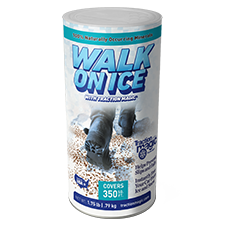How To Remove And Prevent Salt Stains On Your Concrete Driveway
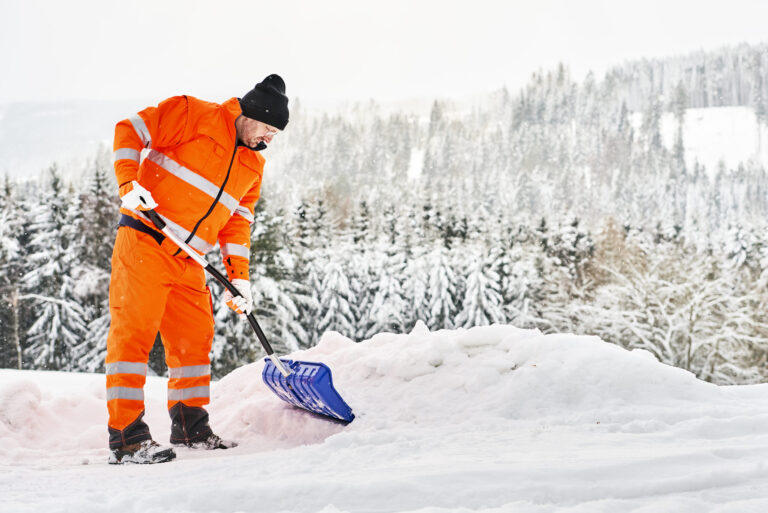
Concrete is one of the toughest materials for driveway construction, and looking for an ice melt that won’t damage concrete is a tricky choice. Most salt-based products tend to leave stains on concrete, irrespective of whether you clean them after the season. While using salt was one of the quickest ways to melt the ice before, today, several other products will help you battle your winter woes better.
How to Remove and Prevent Salt Stains on Your Concrete Driveway
Salt stains on concrete driveways are a common winter issue, often caused by deicing products. These stains not only detract from the aesthetic appeal of your property but can also signal deeper damage to the concrete. Understanding how salt interacts with concrete and implementing preventative measures can save your driveway from long-term deterioration. In this guide, we’ll discuss the causes of salt stains, removal methods, and strategies to prevent them while maintaining the ideal concrete driveway thickness and integrity.
Understanding the Chemistry of Salt Stains on Concrete
Salt stains, often appearing as white streaks or patches, are a result of chemical interactions between deicing salts and concrete.
The Role of Deicing Salts
Deicing salts like sodium chloride (rock salt) and calcium chloride are commonly used to melt ice during winter. These salts lower the freezing point of water, making ice easier to remove. However, they can seep into the porous surface of concrete, dissolving the salts within the material.
Formation of Efflorescence
When water carrying dissolved salts evaporates, it leaves behind white, powdery deposits known as efflorescence. Over time, this buildup can lead to surface scaling, spalling, and aesthetic damage. Proper sealing and maintenance are critical to minimizing these effects.
Environmental Impact of Deicing Salts
While effective at melting ice, traditional deicing salts have significant environmental consequences.
Soil and Water Contamination
Runoff from deicing salts can alter soil composition, reducing fertility and harming nearby vegetation. These salts can also enter water systems, increasing salinity levels and disrupting aquatic ecosystems.
Harm to Concrete Surfaces and Infrastructure
Chloride ions in deicing salts accelerate freeze-thaw cycles, which weaken the structural integrity of concrete. This is particularly problematic for driveways where the concrete driveway thickness might not be sufficient to withstand repeated freeze-thaw stress.
Importance of Eco-Friendly Alternatives
Switching to environmentally friendly deicers, such as Safe Thaw or other non-corrosive products, reduces the ecological footprint while preserving the longevity of your concrete.
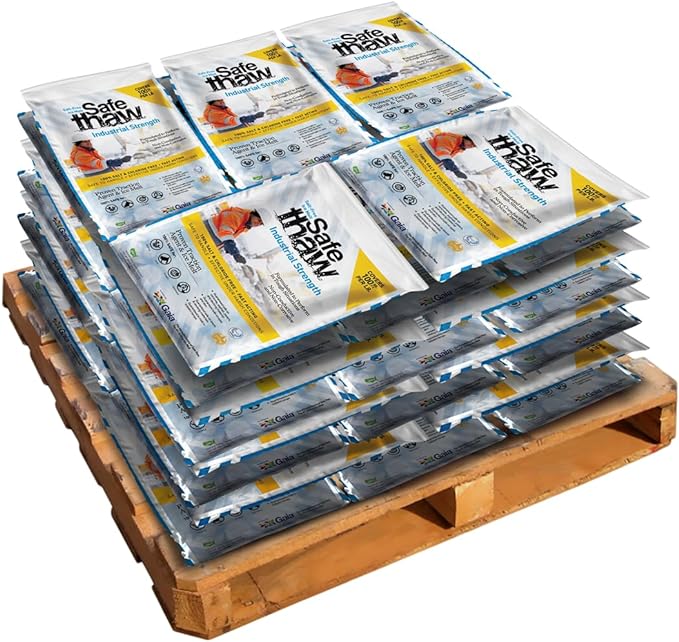
40 Bags
Safe Paw Thaw Industrial Strength Salt-Free Pet Safe Snow Ice Melter and Traction Agent for Concrete, Asphalt, Decks, Lawns, and More, 43 Pound Bag- 40 Bags
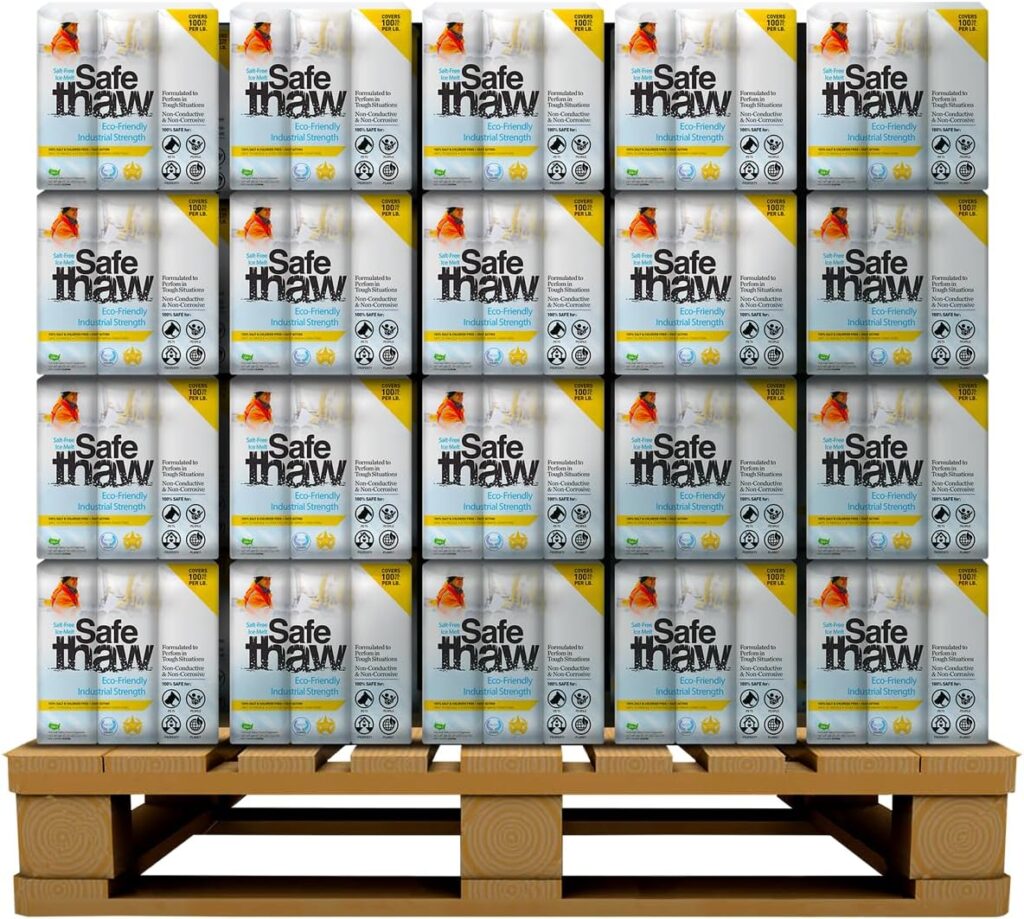
100 Boxes
Safe Thaw Industrial Strength 100% Salt/Chloride-Free, Pet/Paw-Safe Snow & Ice Melter and Traction Agent. Use on Concrete, Asphalt, Roofs & On Any Surface, 30 Pound FlexiPail- 100 Boxes
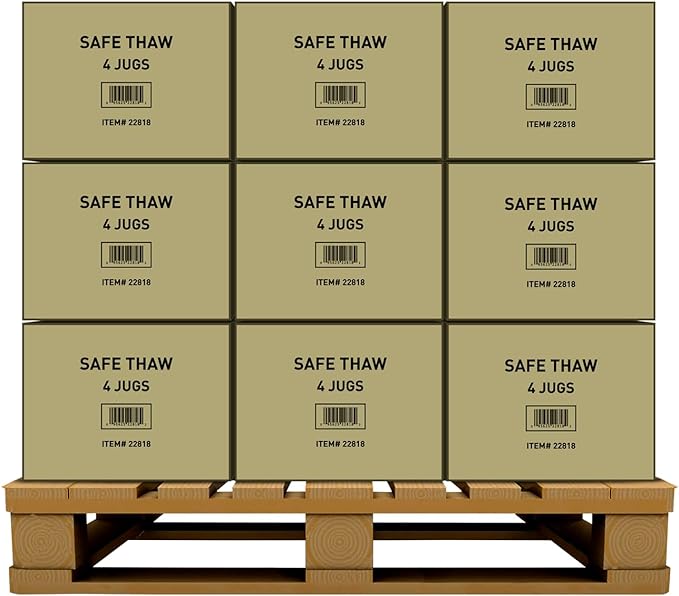
105 Jugs
Safe Thaw Concrete Safe 100% Salt-Free, Pet Safe Snow and ice Melter, Industrial Strength, Chloride-Free, and Traction Agent. Use on Asphalt, Roofs & On Any Surface, 10 Pound Jug- 105 Jugs
Alternative Deicing Methods to Prevent Salt Stains
Replacing traditional salts with alternative methods can protect your driveway and the environment.
Beet Juice Mixtures
Beet juice, when mixed with brine, lowers the freezing point of water and prevents ice from bonding to surfaces. This eco-friendly solution is less damaging to concrete and plants.
Sand or Cat Litter
Both sand and cat litter provide traction on icy surfaces without causing chemical damage. While they don’t melt ice, they are an effective and affordable alternative to traditional salts.
Ice Melt for Trex Decking and Concrete
Using products labeled as ice melt for Trex decking ensures safety for pets, plants, and concrete. These chloride-free solutions are gentle on all surfaces, reducing the risk of stains and scaling.
How to Remove Salt Stains from Concrete
If salt stains have already appeared on your driveway, follow these steps to remove them:
Tools and Materials Needed
- Stiff-bristled brush
- Warm water
- White vinegar
- Mild detergent
- Pressure washer (optional)
Step-by-Step Process
- Scrub the Surface: Use warm water and a stiff-bristled brush to loosen surface deposits.
- Apply a Vinegar Solution: Mix equal parts of white vinegar and water, apply it to the stains, and let it sit for 15–20 minutes. Scrub thoroughly.
- Rinse Thoroughly: Rinse the area with clean water to remove any remaining residue. For stubborn stains, use a pressure washer at a low setting.
- Apply a Sealant: Once the stains are removed, apply a high-quality concrete sealer to prevent future staining.
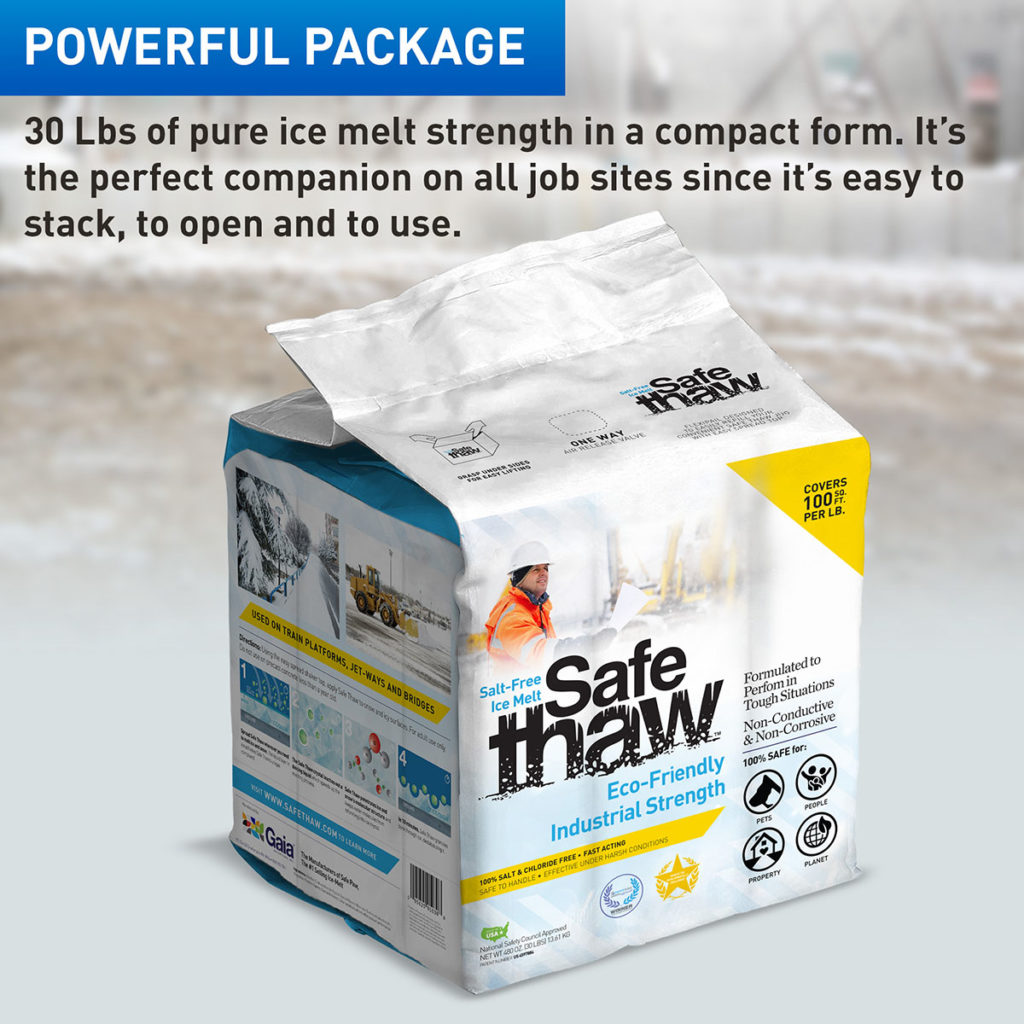
Safe Thaw
Safe Thaw was created as the ice management solution for tough winter environments. Ideal in commercial and industrial properties, shops, government agencies, bridges, and construction.
Observing the concerns of homeowners and commercial property owners over time, Safe Thaw introduced a new-age product that is 100% environmentally friendly and comprises natural ingredients. It comprises a urea-modified core with ice-melting boosters, special glycols, unique surfactants, and other patented properties. It is unlike any other product in the market, which you can regularly use without any hassle. It is the product you need if you are looking at how to melt ice on concrete without stains.
Salt stains on driveways are quite common, especially if you have been using salt-based products regularly. It is a challenge to remove them, but not impossible.
Warm Water
Spray warm water liberally on the stained concrete areas and make them completely wet. Take a bucket of warm water, add vinegar and dishwashing soap, and mix it well. Dip a hard bristled broom in the water and scrub the stains for several minutes to remove the stains.
Scrub Hard
Use the hard bristled broom dipped in the mixture and scrub all the areas evenly. Repeat the process with the mixture and scrub it hard to remove the stains. It may not come off immediately, but you must apply pressure to lift the stains from your concrete driveway.
Wet Vac
Use a wet vac or mop to remove the excess water and avoid any residue on the surface. Be careful with the pores in the concrete because the residue may remain there if not removed immediately. We must take precautions not to let salt get redeposited on the surface. Using a wet vac or wet mop will clear the surface of the dishwasher and vinegar mixture and clean your surface immediately.
Note: Sometimes, the stains are hard to remove because they may have been left for a long. Dried stains must be scrubbed hard to ensure they lighten, if not completely removed.
100% salt & chloride-free, fast acting Ice Management Solution
Long-Term Maintenance Strategies for Concrete Driveways
Consistent maintenance helps preserve the appearance and integrity of your driveway.
Seal the Surface Regularly
A protective sealant creates a barrier against moisture and deicing salts, minimizing the risk of efflorescence and scaling. Reapply sealant every two to three years for optimal protection.
Schedule Periodic Cleaning
Regularly cleaning your driveway with mild soap and water prevents buildup of dirt, salts, and other contaminants. This is particularly important during and after winter.
Maintain Proper Drainage
Water pooling on your driveway increases the risk of salt stains and freeze-thaw damage. Ensure proper drainage systems are in place to divert water away from the concrete.
Monitor Concrete Driveway Thickness
The ideal concrete driveway thickness ranges from 4 to 6 inches, depending on expected load. Maintaining this thickness ensures durability and minimizes the impact of freeze-thaw cycles. If your driveway has thinner concrete, extra care is needed to protect it from salt damage.
What to Use Instead of Salt on Concrete
Deicing salts are not the only option for winter maintenance. Switching to alternatives can save your driveway from damage while being eco-friendly.
Non-Corrosive Ice Melt
Products like Safe Thaw are specially formulated to be safe for concrete, decks, and pets. These alternatives prevent stains and scaling while effectively melting ice.
Heated Driveway Systems
For a long-term solution, consider installing a heated driveway system. These systems eliminate the need for deicing agents by melting snow and ice automatically, preserving your concrete’s appearance and integrity.
Mechanical Snow Removal
Using tools like plastic-edged shovels or snowblowers with adjustable height settings minimizes the need for deicing chemicals, reducing the risk of stains.
Conclusion
Salt stains on concrete driveways are more than a cosmetic issue—they can indicate deeper damage to your driveway’s structure. Understanding the causes and chemistry behind these stains allows you to implement effective removal and prevention strategies.
Switching to eco-friendly alternatives like ice melt for Trex decking and sealing your driveway regularly will protect it from future damage. By maintaining the ideal concrete driveway thickness and following long-term maintenance practices, you can ensure your driveway remains durable, safe, and visually appealing for years to come.
Try Also Our Other Winter Safety Products:
Safe Paw
The Original and #1 Selling Pet and Child Safe Ice Melt for over 20 years. Guaranteed environmentally safe –It won’t harm animals or children, and it won’t damage your property. That’s Safe Paw. Safe Paw can change how winter affects our planet.

Walk On Ice
The handy disposable canister can be taken everywhere, with the same 100% naturally occurring minerals that provide instant traction on ice or snow. Use it on sidewalks, steps, or as an instant traction agent for your car.
